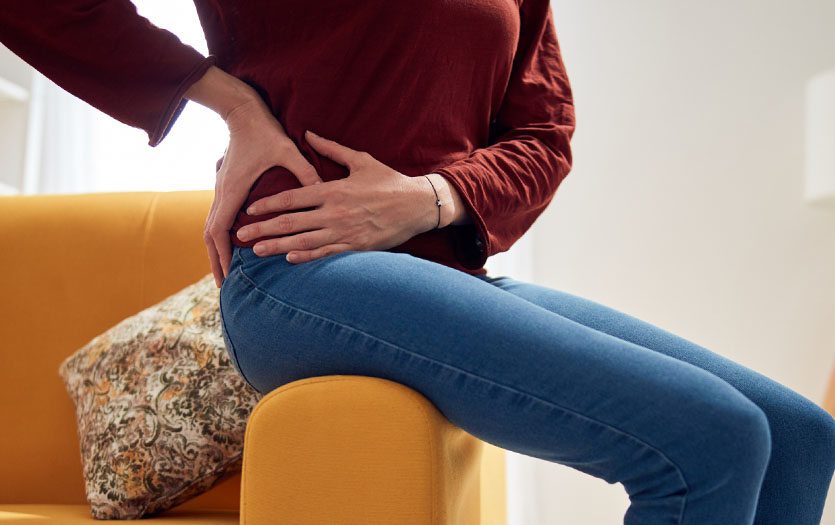
This post was written by Gretchen Jenkins, NP, PPG – Family Medicine.
A peek inside someone’s medicine cabinet can tell you quite a bit about the person or people who use it. That’s because what we keep in this storage area largely depends on our phase of life. Families with small children, for example, need the most comprehensive medicine cabinet, while those without young kids might not require as many products.
Considerations for small children
First and foremost, your medicine cabinet should not be easily accessible to young children. If they can reach it, consider looking into child proofing options or a lock. Also, parents should have the phone number for the Poison Control Hotline (800-222-1222) posted near the medicatine cabinet for easy reference, if needed.
Parents should always use the appropriate liquid, chewable, capsule or tablet recommendations for the people in your family. Read instructions carefully and place medications back in the cabinet once you’re done giving them to your child.
Staples for all
While there are special considerations for younger and older individuals, every family should have the following in the home:
- Acetaminophen: Regular strength, taken per package directions. Acetaminophen is useful for headaches, fevers, minor pains and strains. Liquid preparations for children unable to take tablets. Never increase the dose. Too much Acetaminophen, which comes in multiple combination cold and sinus medications, can severely damage the liver. Never take more than the recommended dose and timing, unless instructed to do so by your healthcare provider.
- Ibuprofen or Naproxen: Either medication is great for strains and sprains, muscle aches and hard-to-relieve headaches. They are also good for fevers that do not respond to Acetaminophen. Again, never take more than the package directions indicate, as too much of these NSAIDs can cause or worsen existing kidney disease. Use with caution if you have problems with heartburn or GI upset. Overuse of these could cause or lead to ulcers and bleeding if not used correctly.
- Guaifenesin: This is a mucus thinner that helps when there is increased mucus in the nose or chest. When taking this medication, you’ll want to increase fluids, as it uses that fluid to thin out those sticky, thick mucus globs that cause pain in the sinuses and coughing when in the throat and lungs.
- Generic or brand name Benadryl: Best for unknown rashes, itching or other sudden allergy symptoms. The capsule is a good way to have this medication. If you or a loved one are having a severe allergic reaction and don’t have an EpiPen®, call 911, open a capsule of Benadryl and put it on the person’s tongue to help slow the reaction until the EMS can get to you.
- Anti-diarrheal medications such as Imodium: Only use these medications as directed. It is best to give your body 8 to 12 hours to attempt to get rid of the substance or microbe that is causing the diarrhea, but don’t allow yourself or your loved one to get dehydrated before you start to use it. Again, only use as directed, as overuse can lead to a complication called Megacolon. (Avoid Pepto Bismol for children under 16 years of age due to the fact that it has an aspirin-like component and can lead to Reye Syndrome if used after/during a viral illness. This is a rare complication, but easy to avoid.)
- A working thermometer: Every family should have one, even an extra one, in case the first one is no longer working. When you take someone’s temperature, do not add or subtract anything. Simply report to your provider or nurse what it was and how you took it.
- Antibiotic ointment of choice: This is great for all those cuts and boo boos. Apply after cleaning the wound with soap and water. Avoid alcohol or peroxide, as they will kill healthy skin cells as well as bacteria.
- Hydrocortisone cream: This topical treatment is helpful for any rashes that are itchy. Only use a thin layer two times daily for up to two weeks. If the rash continues, worsens, or is associated with other symptoms like fever, cough or fatigue, please see your healthcare provider.
- Adhesive bandages of various sizes and durability: Waterproof bandages are nice at times, but cloth is more comfortable. For those with latex allergies, getting some non-woven sterile pads or non-absorbent bandages and paper tape may work instead.
- ACE wrap, 3 to 4 inches wide: For those sprains and strains that might need to have compression to help with healing. Make sure to research how to properly put one on.
- Ice pack: This is a nice thing to have available to use, but you don’t have to spend tons of money on it. Ice in a zipper-seal bag wrapped in a pillow case works just as well.
- A multivitamin with vitamin D, calcium, folic acid and iron: This is always good for women of childbearing age, even if you feel that you are done with having children. The demands on our bodies during those years often require a bit more than we get with diet alone. With all supplements, double check with your healthcare provider for recommendations.
Remember, only use these medications with age-appropriate directions on the medications. Never give medicine to children younger than the medication directions state without talking with your healthcare provider. If you have known diseases such as kidney, liver or cardiac disease, always check with your healthcare provider before taking over-the-counter medications.



